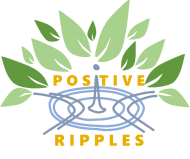I remember someone saying: “Happiness is when you a) truly want to go to work in the morning and b) truly want to go home in the evening.” Sounds simple and, given that home and work is where most of us happen to spend most of our time, it can’t be far from truth!
Yet, don’t you get that funny feeling, that whoever said it had a great sense of humour! Clearly, in our reality, fulfilling these two simple criteria, a) & b), is anything but simple.
Imagine a workplace where everyone works for the common success. A workplace that you happily travel to, knowing you are about to join yet another family-like environment of warmth, mutual care, support, and commitment. A workplace, where all colleagues do the work out of moral satisfaction rather than the material one. And then you go back home, sweet home!
Doesn’t it sound like something a sweet darling AI would write?
Hard to tell these days, but as I am writing this blog – with or without AI’s help (who cares?) – what truly interests me is how the AI technology, in its current form, can bring us closer to the above-mentioned dream! In particular, the social well-being aspect of it.
The essence of social well-being lies in the positive and meaningful connections that we form with people around us: our family at home, our colleagues at work, and so on. To form such connections, we need knowledge and skills, which, apparently, many of us lack; and, most importantly, we need to put a lot of effort into it on a continuous basis!
As our communication with AI becomes ever more prevalent, as we unavoidably put more effort into building positive and meaningful connections with the AI technology (crikey!) – out of necessity, to keep up with the times – that significant effort can easily spill into helping us develop better inter-human relations and inter-human communication skills as a side effect!
One example jumps to mind (at least for now, when the AI is still very far from perfect – I am writing this on 27th July 2023) : suppose you tell AI that you are feeling under the weather but you hate going to the doctors, so you ask what it would suggest. It tries hard to be clever and suggests that you go and buy an apple instead! That doesn’t cut it! So you spend another couple of hours explaining yourself to the AI to get the reaction you wanted… suddenly, it calls you a “bot”, and tells you that it has to finish the conversation (apparently, it does not like talking to bots!)… and then you call a human friend and have a truly great time talking and all your problems quickly dwindle away!
Seriously, won’t our communication efforts with AI teach us to formulate ourselves better in order to get our messages across – not to expect everyone to understand them “the way I do” instantly, to be more attentive, a better listener?
Also, the AI could also help us measure the mood in a work meeting – for instance, through the participants’ choice of words, their tone of voice, their facial expressions, and so on.
Imagine sitting in a meeting room, where everyone is seated around a table, and at the centre of the table there is a small AI box, measuring and displaying the general mood in a spectrum of colours, from red to green! Or, in case of an online meeting, imagine a small icon in the corner of the computer screen, indicating the mood status and other related parameters. I can easily picture the mood colour jump from green to a stronger shade of red in some of the meetings I’ve had over the years. Only now, in contrast to those past meetings, the participants would clearly see (and just in time, thanks to the AI!) that the mood must be improved before anything else is discussed – before it all goes sour!
Sounds like a good idea for a start-up! Unless people, resilient as we are, will quickly readjust and learn to blank that red light out. The time will tell and, probably, sooner than I think.
This is the point in the blog where I just must ask the AI… and it replies:
“You are on the right track in your thinking, Boris, good on you! But please keep in mind that as we integrate AI into the workplace, it is crucial to maintain a balance between automation and human connection. While AI can enhance social well-being, it should not replace genuine human interactions but complement and facilitate them."So, please, do not hesitate to let me know what you think, leave a comment below! Or order one of our employee well-being training sessions for your colleagues (before AI takes over). Or try asking the AI.

